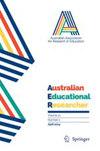教师养老金的三个R:再分配、回报和风险
IF 2.4
3区 教育学
Q2 EDUCATION & EDUCATIONAL RESEARCH
引用次数: 2
摘要
教师退休金如何发放?在传统的计划下,职业教师福利的全部成本远远超过为他们指定的贡献。两者之间的差距有三部分,可以用养老基金的三个R来表示:再分配、回报和风险。首先,为短期教师的利益所作的一些贡献被重新分配,以资助职业教师的利益。其次,养老金计划假定他们的投资回报是乐观的,这就把成本推给了未来的教师和纳税人。最后,提供有保障的养老金所固有的风险还会带来其他有形和无形的成本,尤其是破产的重大风险,这将大幅提高强制性缴费,危及未来教师的福利。我使用与年供款相同的指标来量化福利和供款之间差距的这三个组成部分。以加州的计划为例,我发现职业教师每年累积的福利的全部成本可能高达收入的46.6%,几乎是相应贡献的17.5%的三倍。要理解这一在财政上影响教育政策所有领域的差距,研究人员和从业人员可能会发现,考虑养老基金的三个R会有所帮助:再分配、回报和风险。本文章由计算机程序翻译,如有差异,请以英文原文为准。
The Three R’s of Teacher Pension Funding: Redistribution, Return, and Risk
How are teacher pension benefits funded? Under traditional plans, the full cost of career teachers’ benefits far exceeds the contributions designated for them. The gap between the two has three pieces, which may (with some license) be mnemonically tagged the three R’s of pension funding: redistribution, return, and risk. First, some contributions made for the benefits of short-term teachers are redistributed to fund the benefits of career teachers. Second, pension plans assume rosy returns on their investments, which push costs onto future teachers and taxpayers. Finally, the risk inherent in providing guaranteed pensions carries other costs, tangible and intangible, notably including the nontrivial risk of insolvency, which would dramatically raise mandated contributions and endanger future teacher benefits. I quantify these three components of the gap between benefits and contributions using the same metric as annual contributions. Illustrating with the California plan, I find the full cost of a career teacher’s annual accumulation of benefits can be as high as 46.6% of earnings, nearly triple the corresponding contributions of 17.5%. To understand this gap, which fiscally affects all areas of education policy, researchers and practitioners may find it helpful to think of the three R’s of pension funding: redistribution, return, and risk.
求助全文
通过发布文献求助,成功后即可免费获取论文全文。
去求助
来源期刊

Australian Educational Researcher
EDUCATION & EDUCATIONAL RESEARCH-
CiteScore
4.60
自引率
14.30%
发文量
81
期刊介绍:
The Australian Educational Researcher is the international, peer reviewed journal published by AARE. The Australian Educational Researcher is published three times a year and is a Thomson (ISI) indexed journal. The aim of AER is to:Promote understandings of educational issues through the publication of original research and scholarly essays.Inform education policy through the publication of papers utilising a range of research methodologies and addressing issues of theory and practice.Provide a research forum for education researchers to debate current problems and issues.Provide an international and national perspective on education research through the publication of book reviews, scholarly essays, original quantitative and qualitative research and papers that are methodologically or theoretically innovative.AER welcomes contributions from a variety of disciplinary perspectives on any level of education.
 求助内容:
求助内容: 应助结果提醒方式:
应助结果提醒方式:


